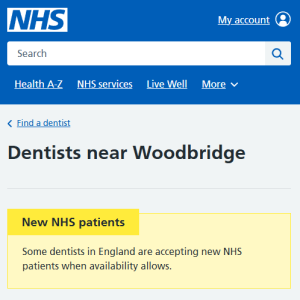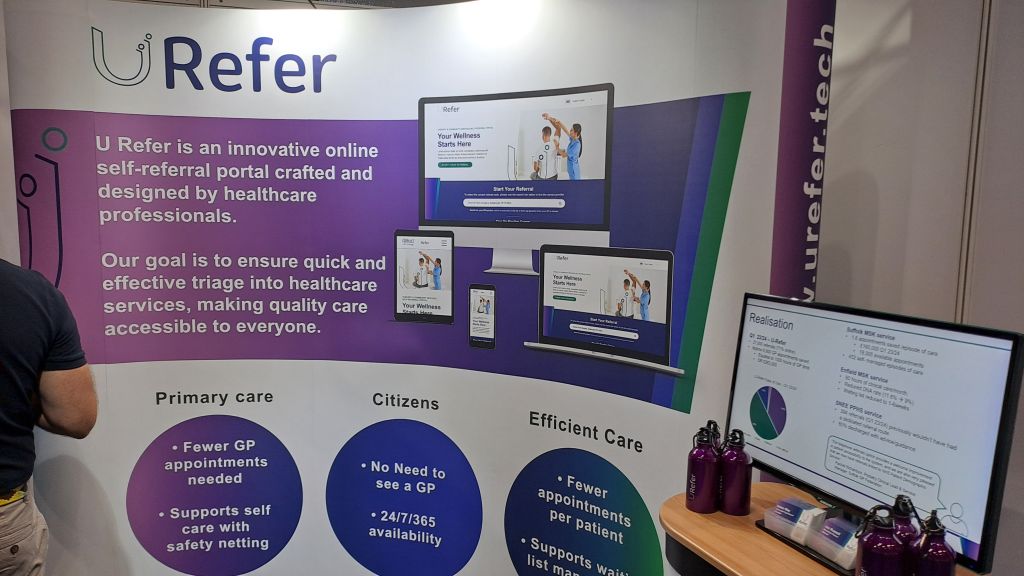
Infotex have been audited as Cyber Essentials Plus compliant to the latest 2025 standard.
We have undergone these independent audits for each of the last 4 years to validate that we are applying best practices for cyber security to help keep ourselves – and our clients – safe against the rising threat of data breach and ransomware.
Many of our clients place a great deal of trust in us. We appreciate the responsibility of this trust and want to reassure all our clients that we are looking after their data safely. Going through a detailed audit like this helps us to ensure that we are doing all that we can.
With the Internet and IT in general being a constantly evolving space, it is important to not rest on past accolades. By utilising external consultants there are always new things to learn and improvements to that can be made. The Internet can be a scary place and worldwide companies are being breached, hacked and ransomed on a daily basis. However, data shows that having controls in place increases the resistance to attack by around 90%.
Cyber Essentials is a scheme overseen by the UK Government’s National Cyber Security Centre (NCSC) and backed by the Federation of Small Businesses (FSB) and Confederation of British Industry (CBI). Within this framework, there are two levels of compliance : Cyber Essentials and Cyber Essentials Plus.
To be compliant with the base Cyber Essentials, an organisation must answer around 70 questions providing technical information and policies for evaluation. These questions cover a wide spectrum, from password policies and storage through to individual computer configuration, networking, software choices and maintenance, and also includes HR policies. It is designed to ensure that the applicant has to evaluate whether they are following current best practice rather than following outdated guidance or beliefs.
Cyber Essentials Plus takes this to the next level. An independent auditor spot-checks a sample number of devices (PC’s and servers) and interview staff members of their choosing to ensure that the policies and practices are being followed across the business. The auditors also perform a range of technical tests to ensure appropriate segregation and security are in place.
Out of an estimated 5 million UK businesses, only around 50,000 successfully complete Cyber Essentials audits each year. There is still a long way for the country as a whole to go to increase its cyber security and is likely to be part of the reason why the Government are bringing forward the UK Cyber Resilience Bill. This will formalise requirements for entities which are in scope, and many of these requirement are based on the underlying pillars of Cyber Essentials.
In recent years we have worked to a limited scope meaning that, from a Cyber Essentials auditing perspective, there were elements of our business which were not able to be fully evaluated. We have been working hard over the last few years to ensure that we have full visibility and follow best practice consistently across the whole business. We have also completed the purchase of additional software to help us monitor all our devices and ensure that we are applying these standards consistently across all our platforms. We are therefore pleased that for 2025 we have been awarded the certification for the whole of Infotex UK Ltd.
2025 also saw a new set of evaluation criteria called “Willow” for the assessment which tightened some controls and in turn required some minor changes to our configurations, however, pleasingly, the majority of the specification changes were to elements where we already exceeded the requirements.
Anyone who works within IT knows how tough it is to be secure because the defender has to be effectively perfect at all times, whereas the attacker only has to find one weakness to be able to get access.
This is why we talk consistently about security, both internally and externally, as we know that it really matters to our clients and there need to be more conversations around what people are doing to protect themselves. With phishing and other scams on the rise, by increasing your own security you are also helping to protect the security of the friends, family, colleagues and businesses around you.
The microchips that we have in our laptops and mobile phones use bits (which can be either 0 or 1 – this is called binary).
Quantum computing is based on the principles of quantum mechanics, the science of tiny atoms and particles. Quantum computers utilise qubits, which can exist in multiple states at once due to superposition. For example, they can be either 0 or 1, or both 0 and 1 at the same time. An analogy of this is a spinning coin – it is both heads and tails until it stops spinning and the side facing up can be viewed. When a qubit is measured, it “collapses” into a definite state – either a 0 or a 1.
Quantum computing also allows for instant communication between qubits. They can also be linked meaning the state of one qubit impacts another, even if they aren’t close together. This process is called entanglement.
Logic gates exist in standard computing by using binary inputs to make computations and data processing. With superposition and entanglement, Quantum gates can handle more complex operations than standard logic gates.
Quantum computing remains a worldwide research project. Some of the biggest technology companies, including Google, Amazon, IBM & Microsoft, have all been trying to advance the state of quantum computing.
Google has announced the 105-qubit Willow chip – this supports more qubits and improved error correction. The current error rates of quantum computing are one of the primary factors limiting this new technology to the experimental stage. Quantum circuits are also vulnerable to changes in temperature, electromagnetic radiation and vibrations.
Currently there are few commercial applications for this new technology, but this will change over the next few years. Willow has been claimed to solve a mathematical problem called random circuit sampling. Willow completed a task in 5 minutes while a massive (standard) supercomputer would have theoretically taken 10 septillion years (1 followed by 25 zeros).
Over the next few years we will need more computing power to help in drug development, enhancing data encryption or to solve complex logic problems, but this doesn’t necessarily mean that there will be quantum chips in our laptops anytime soon.
Many businesses face challenges in managing their data.
From Excel spreadsheets through to off-the-shelf commercial systems, the ability to get the most out of the information that you hold about customers, products and sales is crucial to ensuring your business is delivering to the best of its ability.
Sometimes that data is spread around disparate, disconnected systems – and it is here that Infotex can help. For over 20 years, we’ve been building integration solutions that link those disparate systems together, enabling our customers to maximise the business value of their key data.
You might use this new view of your data to improve reporting, perform data analytics or even pass it to an AI engine to get further insights. Not having to manually retrieve and match up data from different systems could save you and your team hours of work – especially when those tasks need to be repeated daily.
One way of connecting systems together is via an API (Application Programming Interface) – a type of system that is used for the transfer of data between electronic systems, both incoming and outgoing.
There may already be APIs for the systems that your organisation is using to store data. We can help you to use them to access that data and link it to data you already have in other systems, helping you to build insights that wouldn’t otherwise be possible. If there isn’t already an API for your system we could investigate the possibility of creating one or finding other creative ways of you being able to make better use of your organisation’s data.

API’s don’t necessarily require you to have lots of systems in your business or indeed any custom systems as some of the most effective uses are to link two, or more, existing off-the-shelf solutions, perhaps your internal messaging system and your alarm system to let you know each time someone comes or goes. Maybe your marketing team would like a daily message summarising the previous days sales and what stock will soon be running low based on projected sales rates.
The Infotex team has delivered a wide variety of integration solutions, with a range of customers and their external system providers. These include:
Many of our website build and ecommerce projects have found benefits from linking the website to existing back-office systems for accounting and stock control purposes. This integration streamlines operations, reduces manual data entry, and ensures real-time accuracy across all platforms.
When there haven’t been APIs readily available we’ve used a variety of different mechanisms for transmitting data so have a proven record of tailoring a cost-effective solution to our customers specific needs.
Many of the systems that Infotex build contain their own internal APIs which enables us to keep the system simple and streamlined with dedicated responsibilities for each element of the system delegated to an API for that element.
Recently our systems team have been working on a project involving distributed messaging where one system sends a message when something changes in it and that message can then be read by one or more other systems which can then act on the contents of the message by updating data in the other systems or generating output reports or emails. This has the benefit of the source system not needing to wait for any downstream system to acknowledge that it has received and acted upon data it has been sent.
If you’d like to find out how we can help with your organisation’s data challenges please get in touch.
Every website needs a little love and care, is yours getting all it needs to help it truly flourish?
What does a care package mean in respect of a website? We see this as having 4 key areas:
Every business and website is unique. While the person, team, or agency that originally designed your site may have done a great job, their expertise could well be focused just on the design. However, maintaining and managing a website over time requires a different skill set – one they may not possess – making them less suited for ongoing support and care.
Just like your business evolves, so should your brand’s online presence. While a wholesale change is sometimes needed, more often than not small tweaks can ensure that you’re reflecting the values and practices of your wider business. These naturally evolve over time along with the markets they serve, just as you get a painter to give your buildings a touch-up periodically, your website should do the same.
The latest generation of automated tools can allow you to analyse the content on your website and ensure that it is on-brand and current in ways that a few years ago would not be cost-effective. Don’t just rely on tooling however, as branding can be intensely personal which is where a skilled and experienced design and copywriting team can help out.
If you are currently managing your site yourself, are you confident that you’re on top of the latest security updates needed for your site? When applying those updates, how do you check that you’ve not broken other vital parts of the site?
The time between a security issue being identified and attackers taking advantage of it is reducing. You need to ensure that relevant patches are being applied in a timely manner.
Security is a big picture and so much more than just applying patches. It has to be holistic, taking in every part of the ecosystem from password choices to server configuration and filtering out malicious requests. There are so many ways that someone, or an automated bot, can attack your website and the Internet will take advantage of any weakness you leave.
Navigating the world of online compliance can feel like a whole new language! Do you even know if your site complies with privacy requirements such as GDPR & PECR (Privacy & Electronic Communications Regulations) or accessibility rules such as WCAG (Web Content Accessibility Guidelines). We speak this language fluently and can provide actionable insights in plain English.

Using marketing platforms? You might need to implement and maintain compliance with systems like Microsoft UET (Universal Event Tracking) or Google’s CMP (Consent Management Platform), which are constantly being updated. Staying compliant with marketing platform requirements, like these is essential for data collection, ad performance, and avoiding legal penalties. Continuous monitoring of policy and technical updates is necessary in addition to constantly evolving your choice of where to place your ads and the audiences to target.
Is your website lightning-fast, especially on mobile? The average load time for a website on a phone is around 9 seconds compared to the 2 seconds average on desktop. There are a number of techniques that can be used to optimise performance for all platforms.
Caching and CDNs (Content Delivery Networks) ensure that the load time is consistently fast for your growing global audience.
Beyond speed, using metrics such as Google’s Core Web Vitals can help to benchmark your visitors’ experience, this is doubly important as these are also used by Google to help rank sites.
Think about making your website do more. On mobile a website can increasingly act as a fully functioning application. Have you considered whether you could use this to help streamline your customer support needs for example?
We’ve been in this business for over 25 years and we pride ourselves on providing long-term stable relationships with our clients. Perhaps the greatest testament to this is the volume of clients who have been with us for 10 years or more. Our continued success is based purely on our client’s success.
Building a new website is an expensive and sometimes risky process. We work with you to identify what’s working and what’s not, ensuring you get the most value from your initial investment.
We are all about creating an effective partnership with our clients and, to this end, every agreement has an ongoing care package. That may be as simple as providing the routine security patches for your content management system, or a more comprehensive package including marketing and development retainers. This principle is true regardless of your chosen technical platform.
We’re also the secret weapon for some of the smartest design and marketing agencies! Some amazing designers and marketeers understand that their focus should be on creating a great, high performing, site. They need a safe pair of hands to whom they can entrust the ongoing work, someone to keep their client happy once the site is live. This allows them to focus on their next design or marketing project.
We can work silently in the background or connect directly with the end client. If required, our experienced designers can add that extra polish to make even the most effective websites truly shine.
Well that all depends but it all begins with a conversation. Let’s discuss your goals and we’ll follow up with an audit to identify the areas needing most attention. Together we’ll create a plan to evolve your website and ensure it continues to be a valuable asset for your business going forward.
Gen Z (born 1997-2012) are known as the first true digital natives who have grown up with the internet, having easy access to social media, portable digital devices, smartphones, tablets as part of everyday life. They are tech savvy and highly adept with online digital tools and platforms whose preferred way to communicate is via online messaging through social media, gaming platforms and smartphone apps.
Generation Z has distinct digital behaviours compared to millennials, Gen X and boomers. Due to growing up in a digital online world they have had instant access to information to meet their particular needs preferring short form video engaging interactive content which is easier to digest rather than long form text.
Millenials grew up in the time period of making the transition from analogue to digital devices. Gen Z prefer mobile to desktop having had access to smartphones and portable devices.

There is a trend of Gen Z moving away from Google to using social media for searching for information and discovering new brands.
In a recent study when asked where they most frequently discover new products, 18- to 27-year-old consumers responded with:
This data highlights the growing shift toward social media platforms for product discovery among Gen Z.
However, don’t be fooled as Google isn’t going away anytime soon. Millennials (42.45%), Gen X (41.1%), and Boomers (55.9%) still rely on a Google Search first.
As traditional search marketing and AI evolve brands need to leverage social platforms, embrace authentic marketing, and prioritize experiential content to thrive with Gen Z.
I have always felt that a lot of business software development misses a very important part: a structured and formal approach to the business rules and requirements of the developed system (the business Domain). I have always felt that there was never really a home for it, or at least I was not sure where it should go; front-end developers tend to mix it with interface concerns, database experts tend to put it in the database, and newcomers have no idea where to put it. As more requirements and features are added to the same code base over time, what we end up with is an unmanageable and confusing mess, often referred to as a big ball of mud.
This approach to software development will introduce errors because it is difficult or impossible to properly test. It degrades developer productivity because bugs are very hard to pin down even when their results can be observed, because it is not obvious where to look. Any added functionality will create an even bigger ball of mud as there is no incentive to not do so. Eventually the software solution becomes unmanageable.

Where appropriate, we follow a Domain Driven Design approach. The Domain components of the solution model the processes and requirements of the actual real-world business processes and requirements. This is done in focused and specific modules that relate to a particular business context – in this way, each module focuses on a specific aspect of the overall solution and does not try and do too much.
These models contain both properties – the current state of the model, and methods – the ability to change the model state through actions. The state of the model should not be externally editable except through these methods and should never become invalid – if an attempt is made to change the model into an invalid state (through a method) that change should fail with the reason. In this way we enforce the business rules of the application.
This works well, and I believe this is especially important for business software, as, often, the requirements will contain lots of complicated business logic, rules and invariants and perhaps state-mandated regulations like GDPR. By attempting to distil this into a single, well-defined layer of the application, it becomes easier to test, easier to maintain and much easier to reason about. Additionally, because the domain model components resist becoming invalid, it should be much more robust and more difficult to break (either intentionally or by accident).
We can then build on and out from the domain components, adding database access and external services, and expose the domain to any software systems that require its services.
There is no such thing as a free lunch – on the flip side, this highly structured software engineering takes much more discipline and consideration. It also requires belief and confidence in the process from all involved and therefore can increase the time and effort it takes to initially deliver the system.
When the Systems Team at Infotex first started developing using Microsoft .NET C#, we followed a Database-First approach. This involved building the database (tables, views, and stored procedures) first using SQL Server. Data Models were then generated in C# to map to the database tables. The database often contained most of the business logic that dictated how the application would work. However, this approach came with challenges. Any changes to the database tables would inevitably lead to breaking changes in the C# code, requiring additional time and effort to ensure synchronisation between the database and application logic.
Over time, we realised that this method had several limitations. The reliance on the database for business logic made the system less flexible and more prone to errors during updates. It also hindered collaboration within teams, as database changes were not as easily tracked or managed compared to code changes. These challenges prompted us to look for a better way to develop and manage our applications.
In recent years, the Systems Team at Infotex has transitioned to a Code-First approach. With this method, we define C# classes, which are then used to create and manage the database schema. This paradigm shift has been transformative for our development process. Code-First development supports Domain-Driven Design (DDD), which moves the core application logic away from the database structure and into the C# classes that we write. This approach ensures that the application’s core functionality is defined within the codebase, making it easier to understand, modify, and maintain.
A critical tool that facilitates Code-First development is Entity Framework. This allows us to manage database schema migrations seamlessly. For example, when we need to add a new field or modify an existing one, Entity Framework enables us to define these changes within the code and apply them to the database with minimal friction. This level of control over how code maps to database tables empowers developers and improves overall efficiency.
While Code-First development offers numerous advantages, it’s not without its challenges. For example, developers need to have a solid understanding of how Entity Framework maps C# classes to database tables. Mistakes in defining relationships or attributes in the code can lead to unexpected issues in the database schema. Additionally, teams transitioning from a Database-First approach may face a learning curve as they adapt to the new methodology.
In our 25+ year history we have moved our headquarters several times to meet the changing needs of the business. From a smaller ground floor office to a much larger two floored premises as our team and client needs grew. However, despite relocating we’ve always remained true to our roots, basing ourselves within the Woodbridge area. The town has recently been voted the happiest place to live in Britain and our loyalty and connection to the local area certainly attests to that.

Like many organisations during Covid, we closed our office and decided to be entirely remote based, giving us time to take stock and see how the post-covid world would unfold. During this time we were fortunate enough to have use of the fantastic facilities at Martley Hall and Riduna Park, enabling us to still have face to face meetings and work together in person when the need arose.
Fast forward to 2024 and we felt it was time to have our own base once again, having established a new routine and way of working we needed a smaller premises to offer hybrid working, a place to host client meetings and our company-wide gatherings.

We found this and more at our new premises on TideMill Way, less than 5 minutes walk from the train station and Woodbridge town centre. With stunning views of the River Deben, fab coffee from Suffolk Coffee Pod and relaxing walks right on our doorstep to get the creativity flowing. Our new home feels like we’re in a holiday destination rather than an average office block – arguably our best office yet!

In this article our Systems Director Gareth uses his experience working within the NHS to look at the challenges that dentist practices have in publishing availability information, as NHS capacity runs scarce.
Access to NHS dental appointments has been in the news again recently following reports of patients being scammed by false advertising on social media platforms asking them to pay to access NHS dentists which turned out to be non-existent. There have also been calls for a website to be built that can inform people whether there are any NHS dentists in their area taking on patients.
There is information about whether a dentist is taking on NHS patients on the service search section of the NHS.uk website but the site itself has a message that says “Some dentists in England are accepting new NHS patients when availability allows”. The reason for that message being displayed before the user sees any results relates to the complexity of working with NHS data and organisations. Although we talk of the NHS as if it is one large institution at the primary care level i.e. GPs, Dentists, Opticians and Pharmacists it is actually a collection of small businesses that are paid to deliver services.

According to the Kings Fund website there are around 11,000 dental practices in England all of which are private businesses and could be individuals or a collective of dentists working together. Unlike for access to GPs there is no requirement to be registered with a particular dentist in order to receive NHS treatment but since only some of those 11,000 dental practices will accept new adult NHS patients at any one time it is easy to see the value of making that information readily available to those in need of treatment some of whom may have been waiting years for a dentist to become available.
So here’s the first potential problem for anyone trying to get this information to patients, there would need to be a mechanism whereby any one of those 11,000 practices can be marked as accepting NHS patients and, at the point that they decide to stop accepting patients, they must then be unmarked so they do not continue to be inundated with requests. As those 11,000 practices are independent businesses they will all maintain their own individual systems, so there is unlikely to be any automated feed of availability to populate a website with the latest information. They may also be a very small business whose priority will be seeing and treating patients, not updating information on a website.
Before the NHS.uk site contained this information I worked in a team who built a local service locator which was able to indicate whether a dentist was taking on new NHS patients. That system relied on communication between a team of commissioners and the dental practices themselves to keep the information up to date. That was acceptable at a local level but to try and keep up with thousands of different practices would be unworkable. The NHS.uk service search relies on each practice to be able to update their own information or for a local team to update information on the dentists in their area.
Having considered some of the issues with obtaining and presenting data about availability of NHS dentistry it is clear that whilst it has some issues in terms of timeliness of the data the NHS.uk service search facility should still be considered the trusted resource for this information and any local initiatives should first consider how best to support the timely update of information on NHS.uk rather than diluting its usefulness by building something independent.
Our team has decades of experience developing systems, if you need help getting your system to work better for you, or to begin the step of digitalising your organisation then we’d love to hear from you.
In today’s digital-first landscape, having a website isn’t enough. Understanding how it performs is critical to digital success. At Infotex, we leverage Google Analytics, a powerful tool that offers key insights into web traffic, user behaviour and engagement to optimise our clients’ online presence.
Our data-driven approach allows us to assess what’s working, identify growth opportunities and continually enhance user experience for measurable impact. Here’s how Infotex uses Google Analytics to drive real results for clients across all industries.
Every Infotex project starts with a deep dive into the client’s objectives—whether they want to drive sales, increase lead generation or enhance brand engagement. Once we understand their needs, we customise Google Analytics to track the most relevant metrics. By setting up the right goals and objectives in the platform, we’re able to directly monitor the progress and effectiveness of our strategies in real-time.
Example: For an e-commerce client Infotex prioritises goals like conversion rate, checkout visits and product performance metrics, focusing on strategies that drive meaningful increases in sales.
Effective marketing is all about understanding the audience. Google Analytics allows us to learn about each client’s unique user base, from basic demographics like age and location to deeper insights into user interests and devices used. This audience data informs every aspect of our strategy, allowing us to make user-centric recommendations for content, design and functionality.
Why it Matters:
Google Analytics provides valuable insights into how visitors find each client’s website, breaking down traffic sources like organic search, social media, email, and direct visits. This enables us to assess which marketing channels are performing well and adjust strategies as needed to make the best use of resources.
Example: If data shows strong engagement from social channels, Infotex might allocate additional budget to boost social campaigns. Conversely, if organic traffic is lower than expected, we can refine our SEO strategy to increase visibility.

With Google Analytics, Infotex tracks the full user journey from entry to exit. By observing where users enter, the paths they take through the site, and where they drop off, we can identify potential areas for improvement. This information informs critical decisions on page structure, content hierarchy, and call-to-action (CTA) placement.
Key Metrics Tracked:
Conversions are often the ultimate goal for our clients, and Google Analytics makes it easy for Infotex to track these key actions. By setting up custom goals and monitoring them consistently, we gain a detailed look at user behaviour in the conversion funnel, revealing insights into what drives actions and where improvements are needed.
Examples of Goals:
For clients in retail, Infotex uses the e-commerce module within Google Analytics to drill down into sales performance, product preferences, and checkout processes. By examining each touchpoint from product views to purchases, we’re able to develop data-driven strategies that optimise the sales funnel and enhance overall performance.
E-commerce Insights Include:
Google Analytics offers a wealth of data, but we understand that clients need clarity and relevance. We create custom reports with our internal company database and Google generated reports using Raven Reports which includes SEO, social media, PPC ad campaigns, SEO reports to see your website rankings, authority, backlink profile, organic traffic, tailored to each client’s objectives. These reports provide clear visuals of key metrics, making it easier for clients to understand performance and see the impact of our work.
Data on its own is useful, but it’s the actions driven by insights that make the difference. Infotex uses the information collected from Google Analytics to provide actionable recommendations tailored to each client’s goals.
Digital marketing’s dynamic nature means continuous improvement is key. We regularly monitor performance metrics, allowing us to adapt quickly in response to changes in user behaviour, industry trends or client needs. By staying up to date, we ensure that clients receive an evolving strategy to remain competitive.
Infotex’s expert use of Google Analytics enables our clients to make the most of their online presence. Through data-driven insights, strategic adjustments, and ongoing refinement, we help businesses grow, attract more users, and increase conversions—proving the real power of data in digital marketing success.
Spreadsheet Day was created as a way of celebrating one of the most widely used computer-based tools and this year marks both the 15th occurrence of Spreadsheet Day and the 45th birthday of the spreadsheet itself. October 17th was selected because on that day in 1979 VisiCalc, the first spreadsheet program, was released for the Apple II computer.

Over the last 45 years, spreadsheets have proved their versatility and importance to both business and personal users. In today’s data-driven world spreadsheets help businesses to understand more about their operations and can be used to forecast future trends. Their ability to store formulas which can recalculate automatically means it is easy to produce complex calculations and then update values to see the impact in real time. Most spreadsheet tools now also include charts and graphs allowing us to visualise data rather than focus purely on the numbers.
The Infotex team have been discussing some of their favourite spreadsheet functionality. Built-in functions feature highly on the list with the VLOOKUP function a particular favourite. VLOOKUP allows you to search through a dataset for a value and then return another cell from the matching row. Honourable mentions go to the CONCATENATE function (or CONCAT in newer versions of Excel) allowing you to join together text either from referenced cells on the spreadsheet or text that you specify and DATEDIF which allows you to work out the number of years, months or days between two dates.

While Microsoft Excel may dominate the desktop market, with the comparatively recent dawn of cloud-based spreadsheets like Google Sheets the ability to collaborate with colleagues has grown massively with the ability to see real time updates made by collaborators from anywhere in the world. Google Sheets has some impressive functions of its own including IMPORTXML which can retrieve values from a webpage based on HTML tags.
Whilst we’re celebrating spreadsheets we also have to keep in mind times when they’ve been put to uses that maybe they weren’t originally intended for. One infamous example is during the early days of the Covid pandemic the use of an old Excel file format meant that records of test results were incomplete because the spreadsheet simply ran out of rows. More recently a “spreadsheet issue” was blamed for 6,500 votes being missed from the originally declared votes for the Putney constituency in the 2024 General Election (although the oversight didn’t change the overall winner).
Last year we looked at what to do if your spreadsheet has become unmanageable so if you find yourself with a spreadsheet that is stretching the limits of what they are capable of then do consider getting in touch to see how we can help out.
Since the inception of the Suffolk and North East Essex ICS Can Do Health & Care Expo in 2022, Infotex team members have attended as delegates but this year we had our own stand for the first time. The Expo is a great event bringing together a multitude of organisations who work together to improve the health and wellbeing of people across Suffolk and North East Essex. As a digital technology company we feel we can contribute by helping organisations improve awareness of, and access to, their services and introduce systems to streamline their processes to help them help more people.
We enjoyed the day and had some good conversations with the visitors to the Expo. We also took the time to visit some of the other stands to see and hear what other organisations are doing, it’s great to be able to find out more about what is going on in the local area.
Earlier this summer I had the opportunity to join our friends from Allied Health Professionals Suffolk CIC (AHP Suffolk) on their stand at the NHS ConfedExpo in Manchester. The expo is a two-day event where suppliers can advertise their products to an audience of NHS professionals and it also features a range of presentations about technological and process advancements within the health sector.
AHP Suffolk were there to promote their URefer self-referral platform for which the Infotex Systems team are proud to be their development partner. The URefer stand was shoulder to shoulder with stands from the likes of Adobe, BT, Google and Microsoft all of whom value the relationships they have with NHS customers and were keen to show off their range of products and services.

Over the course of the two days of the show it was interesting to see the enthusiasm for URefer amongst a variety of different organisations and over time more will be able to use the system to help patients to access the services they need easily.
As well as helping AHP Suffolk to promote URefer I also found time to browse the other stands myself, meeting up with some familiar faces from my time working in the NHS, looking at some of the new technologies companies were showcasing and listening to sessions being held in the various presentation theatres. Among those was a presentation by another Infotex Systems customer, Ian Turner OBE. Ian was there in his capacity as Co-Chair of the National Care Association to facilitate a talk entitled “Improving the health of care home residents through virtual care” based on processes being implemented in some care homes in the north of England.
All in all, it was great to see the local focus of the Can Do Health & Care Expo in person having also experienced the national level at the NHS ConfedExpo.

Discover how our team can help you on your journey.
Talk to us today